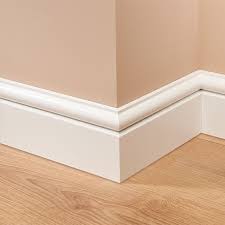Skirting boards and architraves are essential finishing touches in interior design, providing both functionality and aesthetic appeal. Often overlooked, these elements protect walls and frames while creating a polished, professional look. Whether you are renovating your home, decorating a new build, or upgrading a single room, understanding the styles, materials, and installation techniques of skirting and architrave can help you achieve a seamless interior finish.
What Are Skirting Boards and Architraves?
Skirting boards, also known as baseboards, run along the bottom of walls to cover the joint between the wall and floor. They protect walls from scuffs, scratches, and damage from furniture. Architraves are decorative trims around doors and windows that hide gaps and create clean transitions between the wall and openings. Together, they frame the room, add character, and enhance the overall interior design.
Popular Styles of Skirting and Architrave
Skirting and skirting architrave come in a variety of styles to suit different interior themes. Modern styles often feature slim, minimalist profiles painted in neutral colours, ideal for contemporary homes. Traditional styles include ornate or decorative mouldings with intricate patterns that complement classic or period interiors. Transitional designs combine elements of both modern and traditional profiles, offering versatility for homes that blend different design aesthetics. Selecting the right style ensures that skirting and architrave enhance rather than clash with your décor.
Materials Used for Skirting and Architrave
The choice of material affects both durability and appearance. MDF (Medium-Density Fibreboard) is popular due to its smooth finish, affordability, and ease of painting. It works well in modern and classic interiors alike. Solid wood offers natural beauty and long-lasting durability, suitable for high-end or traditional homes. PVC or plastic trims are lightweight, water-resistant, and perfect for moisture-prone areas such as kitchens and bathrooms. Each material has unique advantages, and the choice depends on budget, design preference, and room requirements.
Choosing the Right Height and Profile
Height and profile of skirting boards influence the room’s overall appearance. Taller skirting boards create a sense of grandeur, making rooms look more spacious and elegant, while shorter boards are subtle and ideal for minimalist interiors. Profiles can be simple, with flat or chamfered edges, or decorative, featuring curves and intricate detailing. Architrave profiles should complement the skirting boards to maintain a consistent and cohesive look throughout the home.
Installation Tips for a Professional Finish
Proper installation is crucial to achieving a polished look. Measure walls and openings accurately to ensure precise cuts. Corners should be mitred or joined neatly, and any gaps filled with caulk or wood filler for a seamless finish. Skirting boards should be fixed securely to the wall, and architraves should sit flush around doors and windows. Pre-primed or ready-to-paint mouldings simplify DIY installations, but professional installation guarantees precision, especially for intricate or high-end profiles.
Painting and Finishing
After installation, painting or staining skirting and architrave enhances the visual impact. Neutral or matching wall colours create a subtle, modern effect, while contrasting shades can make the trims stand out as a decorative feature. For wooden trims, clear varnish or wood stain highlights the natural grain, adding warmth and elegance. Proper finishing ensures durability and complements the room’s overall aesthetic.
Maintenance and Longevity
Skirting boards and architraves require minimal maintenance but benefit from occasional cleaning and inspection. Wipe them with a damp cloth to remove dust and debris, and check for signs of damage or moisture. Repainting or refinishing every few years can maintain their appearance and protect the material, ensuring a long-lasting and polished finish.
Conclusion
Skirting boards and architraves are small but powerful elements in interior design, combining functionality with style. Understanding the different styles, materials, heights, and installation techniques allows homeowners to make informed decisions that enhance both the protection and aesthetics of their interiors. By investing in quality skirting and architrave, you can achieve a professional, polished finish that elevates any space and stands the test of time.

